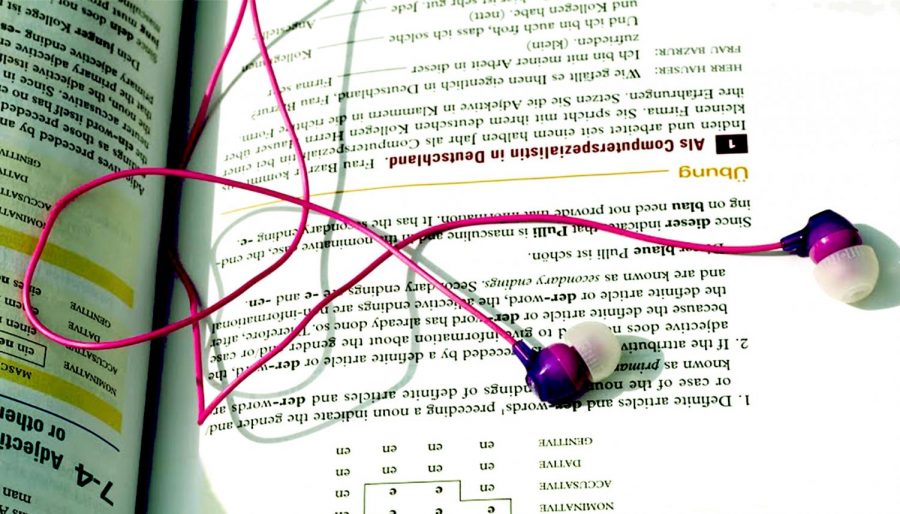How headphones affect hearing and what damage they can cause
Headphones at the right volume are probably not going to damage the hearing process, but how risky is the constant use?
Headphones at the right volume are probably not going to damage the hearing process, but how risky is the constant use?
February 19, 2018
Headphones. Over the head. In the ear. And through the tympanic membrane they go. Playing loud music to drown out the world is known as a peaceful act, but how peaceful is the tympanic membrane when listening to anything on level ten?
Headphones can be worn to help focus through a workout, homework, a creative process, or even to fall asleep; however, whether listening to a podcast or hard metal, there are risks to using headphones.
Using headphones in moderation at the right volume is not harmful to the hearing process. The volume is where the damage is done. Specifically, the damage comes from the types of headphones used and high volumes for long periods of time.
“It is recommended that you don’t wear them at more than 60-65% volume at more than an hour at a time.”
— Audiologist, Laura Coffee
Science
Timothy Haertel, advisor for sound engineering and music business at IU Southeast , explains how the brain processes sound.
“Sound is vibrations. When they move through the air from a headphone, they are then captured by the ear,” Haertel said. “This causes the eardrum to vibrate and through a complex electrochemical process, the vibrations are turned into nerve impulses that are then interpreted by your brain.”
The type of music is a factor in the damage it can cause. Whether the volume is correct or not, some music is better for the ear than others.
“The movement of air to reproduce a bass frequency is much more than the movement of air to produce a high frequency; the length of the waveform of a low frequency is much longer, so it requires the eardrum to stretch much further to perceive that sound,” Haertel said.
The use of headphones can easily damage the intricate process of interpretation the brain goes through. To avoid stretching the eardrum, keep the volume down on music with a lot of bass in it.
When the volume of the headphones start to hurt the ear, it is time to turn the volume down. Note that headphone use can still cause damage to the ear at recommended levels.
Recommendation
It is widely known that high volume levels can hurt the ear, but can damage be prevented. Audiologist, Laura Coffee had some insight on this topic. “It is recommended that you don’t wear them at more than 60-65% volume at more than an hour at a time.” said Coffee.
Another factor to take into consideration is the type of headphones to use. Coffee recommended noise canceling over the head headphones for the least amount of damage. “You’re getting a really clean sound and you don’t have to turn it up very loud due to interference.” Coffee said.
Some of Coffee’s advice is to wear the ear plugs when going to a concert or any loud event. They are super cheap and can save the ear from years of damage in one setting.
Turning the volume up to ten to get the best possible sound, is an oxymoron. The clearest and most satisfying sound doesn’t come from the volume, it comes from the device used.
According to Crutchfield “… with in-the-ear models, the lessening of ambient sounds lets you enjoy your music at lower volume levels.” The clearest sound is the most satisfying sound and the best way to receive that is through over the ear headphones.
So, use headphones whenever is a good time. Just be sure to take breaks every hour and keep the volume below 65%. If you don’t own over the head headphones, it isn’t a bad idea to look for some, with a noise cancelling system of course.













